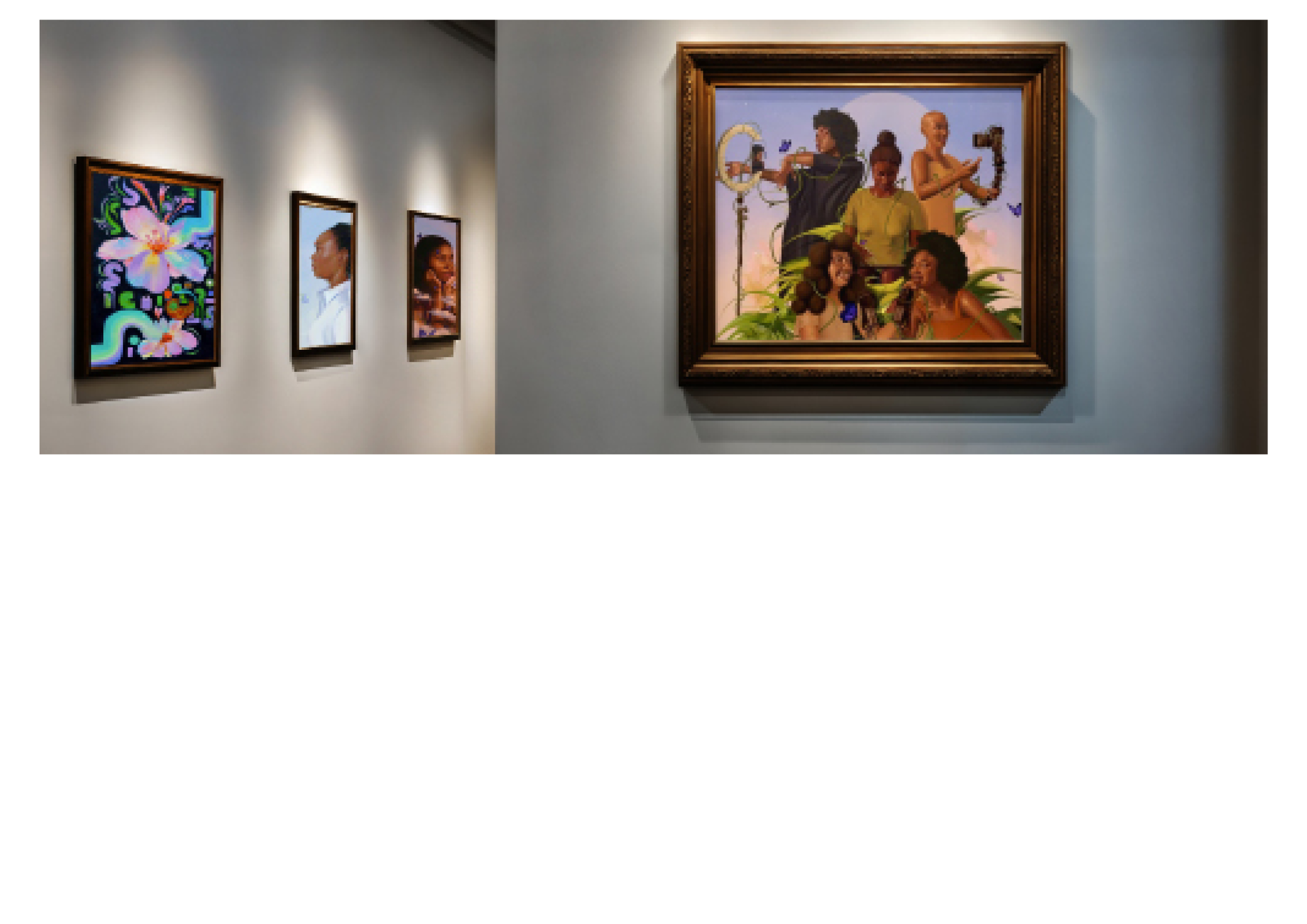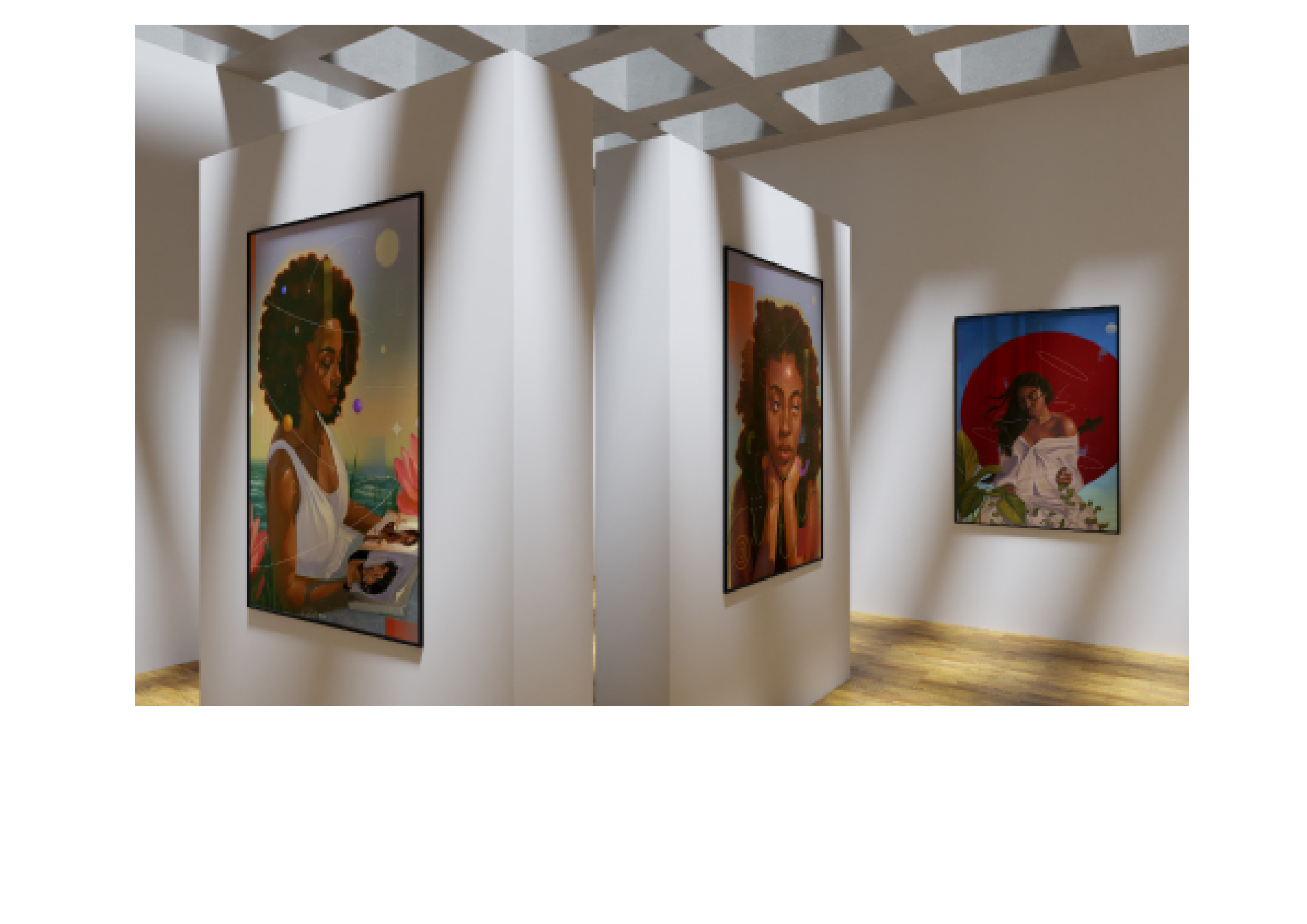“Being a woman is central to my identity, and it naturally permeates all that I do. My work is a direct reflection of who I am and that perspective inherently shapes everything I create.”
Multimedia artist, Lethabo Huma, discusses her journey from traditional painting to 3D technologies, finding balance in the digital age and creating art that transcends mediums.
BETWEEN WORLDS
For Lethabo Huma, the boundary between traditional and digital art isn't a dividing line–it's a creative playground. “I work with various mediums, including traditional painting, digital painting and 3D art,” she explains.
Huma explores themes of identity and emotion across media, whether adding textures that emulate traditional paint strokes or incorporating digital elements like geometric shapes into physical paintings.
The South African artist's trajectory reflects the evolving relationship between art and technology. “I started as a traditional artist and never imagined that technology would open up so many creative possibilities,” she reflects. “This transformation not only expanded my artistic practice but also connected me with a global community that values digital art in many ways, including NFTs.”
CREATING ACCESS THROUGH EDUCATION
Huma's impact extends beyond her personal artistic practice. She recently collaborated with Lenovo to develop a masterclass on 3D technology, providing training on essential tools, workflows and best practices.
This educational initiative aligns with her perspective on inclusivity in the art and technology landscape. “A big part of the challenge right now is that many advanced tools and educational resources require specialised knowledge or there's so much information that it's hard to know how to navigate it,” she observes.
Her solution focuses on demystifying complex tools: "Making these tools more intuitive and accessible–like through offering a simple 3D masterclass, such as the one I did with Lenovo, could help bridge the gap.”
THE CHALLENGE OF DIGITAL CREATION

FINDING INSPIRATION
Huma cites two significant influences on her artistic development: South African illustrator Karabo Poppy and digital artist Alexis Franklin.
“Karabo Poppy is one of the biggest illustrators in South Africa and since I'm from South Africa too, I really looked up to her when I was starting out,” she explains. “She showed me that as an artist, you don't have to stick to just one way of creating; you can explore different methods and still build a strong artistic identity.”
Alexis' work provided technical inspiration: “She was actually one of the first artists I came across when I started researching digital art. What stood out to me was how she managed to make her digital pieces look like traditional paintings.”
EMBRACING IDENTITY IN CREATION
When asked about how her perspective as a woman influences her art, Huma's response is straightforward, “Being a woman is central to my identity and it naturally permeates all that I do. My work is a direct reflection of who I am and that perspective inherently shapes everything I create.”
This integrated view of identity informs her advice to women entering her field, “Follow your creative impulses and don't be afraid to explore different styles, mediums or ideas. Creativity needs space and time to grow so take breaks when you need them. Rest and inspiration go hand in hand–you can't create your best work when you're burnt out.”
She encourages artists to define success on their own terms: “Be brave enough to step into different art spaces and find what feels right for you. Not every space will feel like home but embrace that exploration. And remember that you can redefine yourself as many times as you want.”
LOOKING FORWARD
Huma approaches her future with characteristic openness. “I'm someone who embraces the unknown and stays open to wherever life leads me,” she says. “I hope to be more immersed in the intersection of art and technology, exploring various mediums beyond just digital art and 3D.”
Her curiosity is taking her into new technical territories, “I'm also diving into coding, development and exploring AI and machine learning.” This exploration represents the next evolution of her practice.
When considering the future of Web3 and blockchain for artists, she anticipates both opportunities and challenges: “I think we will still see more people jump in on the Web3 wave, making the space more saturated, making it harder for artists to stand out.” Yet she also envisions “more projects pushing creative boundaries with experimental and immersive experiences that redefine digital art” and greater financial autonomy for creators.
For Huma, the journey between traditional and digital will continue to be one of exploration, education and maintaining balance in an increasingly complex creative landscape.

Lethabo Huma is a South African multimedia artist working across traditional and digital mediums. Find her on Instagram (@lethabohuma_art) and X (@lethabohuma).
